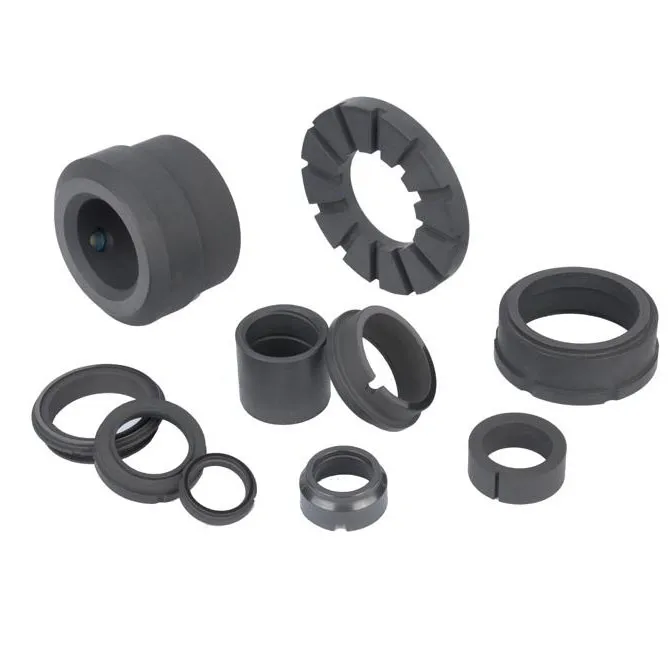
The sealing performance and service life of mechanical seals are related to the materials of each part, especially the materials of the end face seal (friction pair), the materials of the auxiliary seal and the materials of the spring. 1. Materials of the end face seal friction pair Friction pair materials include graphite, ceramics, surfacing carbide, tungsten carbide alloy, SiC, filled polytetrafluoroethylene, tin bronze, steel bonded carbide, stainless steel, phenolic plastic, nylon, etc.

The properties of commonly used materials are as follows:
1. Graphite The advantages of graphite are good corrosion resistance and self-lubrication, small friction coefficient, good heat shock resistance and easy processing. The disadvantages are low mechanical strength and porosity. These two shortcomings of graphite can be improved by impregnation and carburizing. Impregnated graphite can be divided into two types: resin impregnation and metal impregnation. Resin impregnated graphite has good corrosion resistance, but is not resistant to high temperature (temperature resistance is about 170~200℃); metal impregnated graphite has good high temperature resistance (impregnated bronze, aluminum, lead, etc. can withstand high temperatures up to 400~500℃), but poor corrosion resistance. Graphite is the most widely used non-metallic material, used as the dynamic ring of medium and low speed mechanical seals and the static ring of high speed mechanical seals. Good graphite looks dense to the naked eye, does not peel off much when touched by fingers, and does not stain fingers black.
2. Ceramics The advantages of ceramics are good corrosion resistance, high hardness, and good wear resistance. The disadvantages are high brittleness and high hardness and difficulty in processing. Alumina ceramics and metal ceramics are more commonly used. Ceramics are mostly used in corrosive media and medium and low speed occasions.
3. Overlay welding of cemented carbide Overlay welding of cemented carbide on the sealing surface of carbon steel, chrome steel and chrome-nickel steel has the advantages of high hardness, good wear resistance, good temperature resistance (below 500℃), good corrosion or cavitation resistance, and the disadvantages are easy to produce pores, slag inclusions and uneven surface hardness.
4. Tungsten carbide alloy It is made of metal carbides with high hardness and high melting point such as tungsten carbide and titanium carbide. It is pressed and sintered by powder metallurgy with binder. The advantages are high hardness, high strength, wear resistance, high temperature resistance, corrosion resistance, and low linear expansion coefficient. The disadvantages are brittleness and difficulty in processing. Tungsten carbide is the most widely used end face seal auxiliary material, mostly used as the static ring of medium and low speed mechanical seals and the dynamic ring of high speed mechanical seals.